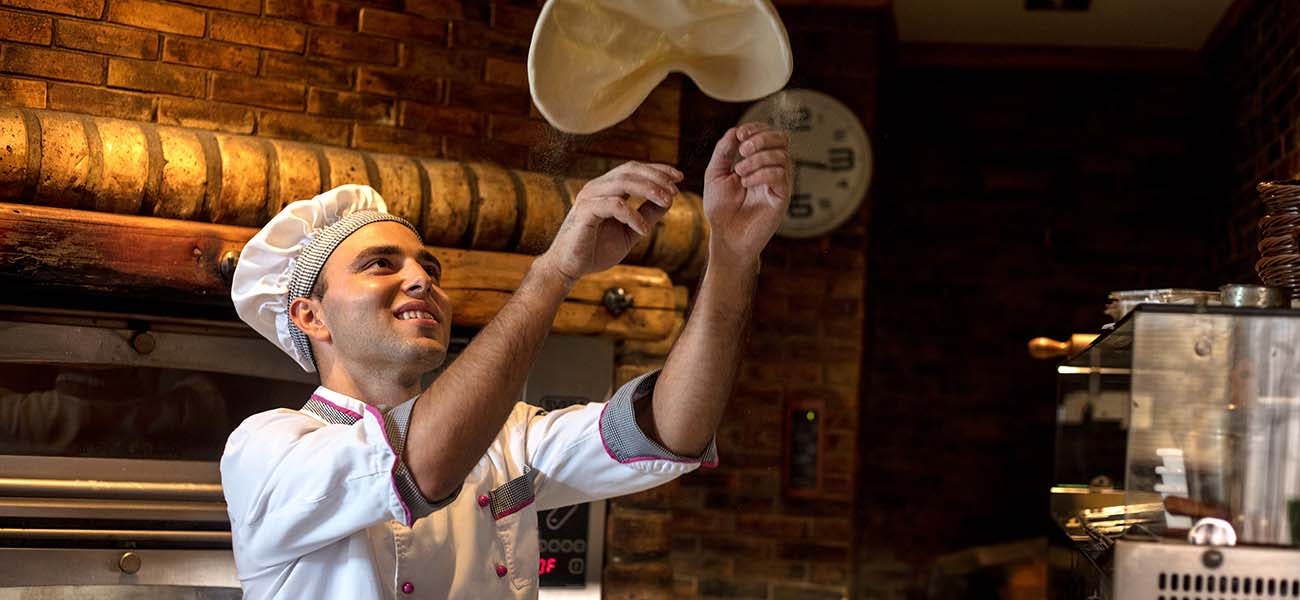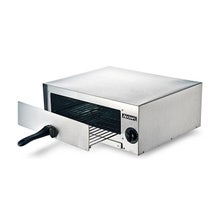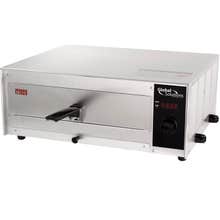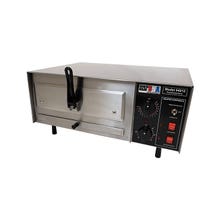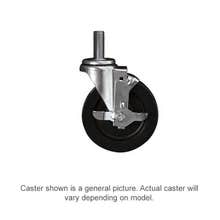Which Pizza Oven Is Right for Your Shop and Style of Pizza? Our Buying Guide
By: Matthew Berry • Feb. 21, 2023 • 13 minute read time
Which Pizza Oven Is Right for Your Shop and Style of Pizza? Our Buying Guide
If you ask any pizza maker, they'd tell you the oven is one of the most important parts of creating the perfect pizza. But which oven is right for your pizza shop and the type of pizza you want to make?
Let's start by taking a look at the various types of Pizza Ovens:
- Wood-fired ovens: Wood-fired ovens use wood as the fuel source, producing a crisp crust and intense flavor. They're more expensive and require more maintenance than all the other types of ovens.
- Gas ovens: Gas ovens use natural gas or propane as the fuel source and are more convenient and cost-effective than wood-fired ovens. They're more controllable, allowing for precise temperature control.
- Electric ovens: Electric ovens use electricity as the fuel source and are the most convenient and energy-efficient type of oven. They are also more consistent in cooking and temperature control than other ovens.
- Conveyor ovens: Conveyor ovens are designed for high-volume operations. They feature a continuous belt that moves pizzas through the cooking chamber. They're ideal for large pizzerias and chains but less versatile than other ovens.
- Deck ovens: Deck ovens are designed for artisanal pizzerias and feature a series of decks or shelves that can be loaded with pizzas. They allow for greater control over the cooking process and provide a crispy crust, but they are less versatile than other ovens.
Conveyor and deck-style ovens are available in gas and electric models.
Some main differences between pizza ovens are fuel type, temperature control, cooking speed, cost, maintenance, and versatility.
It is important to consider the specific needs of your pizza restaurant when choosing the right type of oven.
Features to Look for in Pizza Ovens
The pizza business is booming. Finding the best oven with all the right features to suit your needs is important. Your pizza recipe can have the perfect amounts of flour, sauce, cheese, and toppings, but your pie may not turn out perfectly if you don't have the right oven.
When purchasing pizza ovens for your pizzeria, it is important to consider the following features and benefits:
- Cooking capacity: Choose ovens with the right cooking capacity to meet your restaurant's demand.
- Temperature control: Look for ovens with precise temperature control to ensure consistent cooking results and accommodate different pizza types.
- Fuel type: Based on the restaurant's needs and fuel availability, decide on the type of fuel to use (e.g., gas, wood, or electric).
- Ease of use: Choose user-friendly, easy-to-operate ovens with clear controls and instructions.
- Durability: Invest in ovens built to last and withstand the demands of a busy restaurant.
- Energy efficiency: Consider ovens that are energy efficient to reduce energy costs and help the environment.
- Maintenance: Look for ovens with low maintenance requirements and easy access for cleaning and repairs.
- Brand reputation: Choose ovens from reputable brands with a proven quality and reliability track record.
- Warranty: Consider ovens with a warranty for peace of mind and protection against unexpected repairs or replacements.
- Professional advice: Consult with kitchen equipment professionals, such as suppliers and chefs, to make informed decisions on oven selection.
How do Wood Fired Pizza Ovens Work?
Wood-fired ovens are a type of pizza oven that uses wood as the fuel source. They are known for their ability to produce a crispy crust and intense flavor, making them popular among artisanal pizzerias and restaurants. The following are some of the key features and benefits of wood-fired ovens:
- Traditional cooking method: Wood-fired ovens are a traditional cooking method for pizza that has been used for centuries. They provide a unique flavor and texture that is difficult to replicate with other ovens.
- Versatile cooking: Wood-fired ovens can be used to cook not only pizzas but also breads, meats, vegetables, and more. They offer a wide range of cooking temperatures, making them suitable for a variety of dishes.
- Intense heat: Wood-fired ovens can reach extremely high temperatures, essential for cooking pizzas in just a few minutes. The extreme heat also helps produce a crispy crust and retain moisture in the toppings.
- Ambiance: Wood-fired ovens are visually appealing and can create an inviting atmosphere in the restaurant. They're also great conversation pieces, which can attract customers and create a unique dining experience.
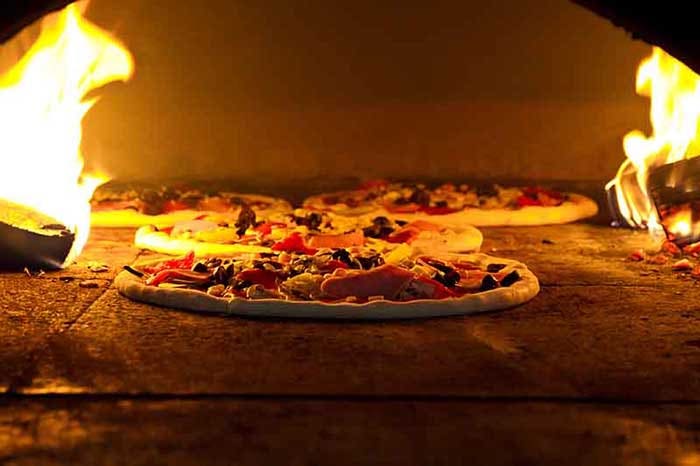

- Energy-efficient: Wood-fired ovens are energy-efficient and environmentally friendly, as the fuel source is renewable. However, they generate more waste compared to other types of ovens.
Wood-fired ovens are more expensive to purchase and maintain than other types. They also require more expertise and experience to operate, as the temperature can fluctuate depending on the type of wood used and the ventilation in the oven. Nevertheless, wood-fired ovens are popular among pizzerias and restaurants, prioritizing quality and authenticity.
What are the Benefits of a Gas Pizza Oven?
Gas pizza ovens use natural gas or propane as the fuel source. They are popular among pizzerias and restaurants due to their convenience, cost-effectiveness, and temperature control. The following are some of the key features and benefits of gas ovens:
- Consistent cooking: Gas ovens provide consistent and even heat distribution, which is essential for evenly cooking pizzas. They also allow for precise temperature control, which can be adjusted based on the type of pizza being cooked.
- Faster cooking: Gas ovens heat up quickly and cook pizzas in minutes. This is important in high-volume operations where speed is essential.
- Lower maintenance: Gas ovens require less maintenance than wood-fired ovens, as they do not generate ash or require cleaning the chimney. They also have a longer lifespan and are more durable.
- Cost-effective: Gas ovens are more cost-effective than wood-fired ones, as the fuel source is readily available and less expensive. Due to their energy efficiency, they also have lower operating costs.
- Safety: Gas ovens are considered safer than wood-fired ovens, as there is no risk of fire from stray sparks or embers. They also have built-in safety features, such as automatic shut-off valves, that provide added protection
However, gas ovens do not produce the same intense heat as wood-fired ovens and may not create the same depth of flavor. They also require a natural gas or propane source, which may not be available in all locations. Gas ovens are a reliable and convenient option for pizzerias and restaurants that prioritize consistency, speed, and efficiency.
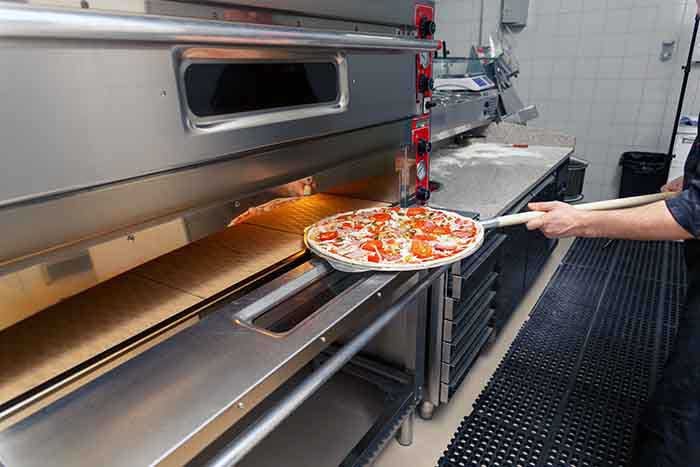

Why are Electric Pizza Ovens Popular?
Electric pizza ovens use electricity as the fuel source. They are popular with pizzerias and restaurants due to their ease of use, cost-effectiveness, and consistent temperature control. The following are some of the key features and benefits of electric ovens:
- Consistent cooking: Electric ovens provide consistent and even heat distribution, essential for evenly cooking pizzas. They also allow for precise temperature control, which can be adjusted based on the type of pizza being cooked.
- Easy to use: Electric ovens are easy to use and do not require any special training or expertise. They also do not produce any ash or require cleaning of the chimney.
Cost-effective: Electric ovens are more cost-effective than wood-fired or gas ovens, as they do not require any special fuel source. They also have lower operating costs due to their energy efficiency. - Safety: Electric ovens are considered safe, as there is no risk of gas leaks.
Versatile cooking: Electric ovens can be used to cook not only pizzas but also breads, meats, vegetables, and more. They offer a wide range of cooking temperatures, making them suitable for a variety of dishes.
However, electric ovens do not produce the same intense heat as wood-fired ovens and may not create the same depth of flavor. Overall, electric ovens are a reliable and convenient option for pizzerias and restaurants that prioritize ease of use, consistency, and efficiency.
What are the Advantages of a Conveyor Pizza Oven?
Conveyor ovens are pizza ovens that use a conveyor belt to move pizzas through the oven for baking. They are a popular choice for pizzerias and restaurants that need to cook large volumes of pizzas in a short amount of time. The following are some of the key features and benefits of conveyor ovens:
- High-volume cooking: Conveyor ovens are designed for high-volume cooking and can bake multiple pizzas at once. This is ideal for pizzerias and restaurants with a high demand for takeout and delivery orders.
- Consistent cooking: Conveyor ovens provide consistent and even heat distribution, which is essential for evenly cooking pizzas. They also allow for precise temperature control, which can be adjusted based on the type of pizza being cooked.
- Fast cooking: Conveyor ovens cook pizzas quickly, typically in 5-7 minutes. This is important in high-volume operations where speed is essential.
- Energy efficient: Conveyor ovens are energy efficient and typically use less energy than traditional ovens. This results in lower operating costs and a reduced carbon footprint.
- Easy to use: Conveyor ovens require no special training or expertise to use. They are also low-maintenance and do not generate ash or require chimney cleaning.
However, conveyor ovens are more expensive than other pizza ovens and require a dedicated space in the kitchen. They also have limited customization options, as pizzas are cooked on a conveyor belt and cannot be rotated or positioned in the oven. Overall, conveyor ovens are a reliable and efficient option for pizzerias and restaurants that prioritize high-volume cooking and fast service.
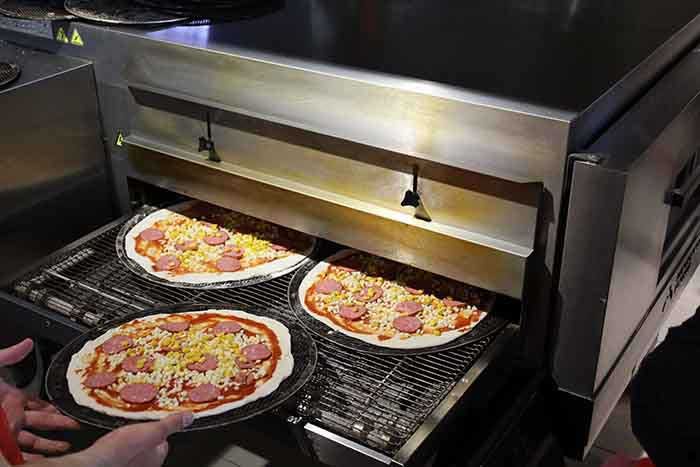

Why Should You Use a Deck Pizza Oven?
Deck pizza ovens feature multiple baking decks or shelves stacked on top of one another. They are a popular choice for pizzerias and restaurants that want to cook high-quality pizzas with a crispy crust. The following are some of the key features and benefits of deck ovens:
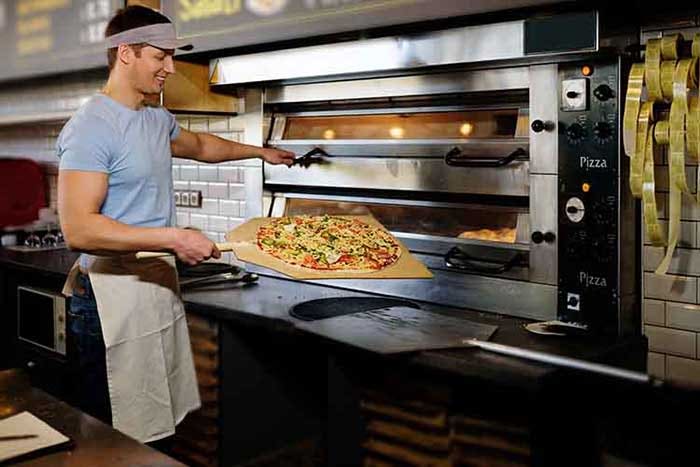

- High-quality cooking: Deck ovens provide high heat and consistent temperature, which is essential for cooking pizzas with a crispy crust and evenly melted cheese. They also allow for precise temperature control, which can be adjusted based on the type of pizza being cooked.
- Versatile cooking: Deck ovens can be used to cook not only pizzas but also breads, meats, vegetables, and more. They offer a wide range of cooking temperatures, making them suitable for a variety of dishes.
- Customizable cooking: Deck ovens allow for greater control over the cooking process, as pizzas can be positioned and rotated on the baking deck. This allows for customized cooking based on the type of pizza and desired results.
- Versatile cooking: Deck ovens can be used to cook not only pizzas but also breads, meats, vegetables, and more. They offer a wide range of cooking temperatures, making them suitable for a variety of dishes.
- Customizable cooking: Deck ovens allow for greater control over the cooking process, as pizzas can be positioned and rotated on the baking deck. This allows for customized cooking based on the type of pizza and desired results.
- Traditional cooking method: Deck ovens are a traditional type of oven used for baking pizzas and are often preferred by pizzerias and restaurants that want to maintain a classic feel.
Deck ovens are more expensive than other pizza ovens, require a dedicated space in the kitchen, have limited capacity, and are not ideal for high-volume cooking. Overall, however, deck ovens are a reliable and high-quality option for pizzerias and restaurants that prioritize traditional cooking methods and the production of high-quality pizzas.
Other Pizza Making Equipment
Now that you've decided on a pizza oven, it's time to think about the other equipment you'll need to make pizzas.
- Pizza screens and pans: Pizza screens are ideal for baking pizza crusts that are light and crispy. They're made of thin mesh aluminum. The mesh allows hot air to reach the crust easily, making them ideal for convection, impinger, and conveyor ovens. Pizza pans are often solid pieces of metal used to bake pizza dough. They come in a variety of styles, including traditional coupe-style pans, deep dish (including rectangular Detroit-style), and perforated pizza pans that allow some airflow but not as much as a screen. Screen and pan racks can help you keep them organized.
- Pizza stones: If you don't have a dedicated pizza oven, a pizza stone in a standard or convection oven can be a great way to achieve a crisp crust.
- Pizza peels: Peels are used to remove pizzas from ovens, often deck or wood-fired ovens, or off a pizza stone. They consist of a long, usually wooden handle attached to a wide blade that can slide under an entire pizza to pull it from an oven.
- Pizza cutter and knives: When it comes to slicing a pizza, the two most popular ways to go are with a pizza wheel and a pizza knife. A pizza wheel is a metal disc attached to a handle that you roll through a pizza to cut it into pieces. A pizza knife usually has two handles and a long curved metal blade that you rock back and forth to cut a pizza into slices quickly.
- Pan gripper: When pulling pans out of an oven rack, off a conveyor belt, or moving hot pans around on the line, a pan gripper is an easy way to keep your hands off the hot the metal trays without using oven mitts or towels.
- Pizza dockers: To prevent your dough from bubbling up while it bakes, use a pizza docker to aerate it, letting gasses escape easily. If you still have a bubble form while baking, a bubble popper can help eliminate it.
- Dough boxes: Dedicated dough pans and boxes give you a place to store your unbaked pizza dough while it proofs and waits to be baked.
- Mixers: Spiral mixers offer pizza makers a dedicated machine for mixing dough. A planetary mixer with a dough hook can also make pizza dough, and other attachments allow the mixer to slice ingredients, shred cheese, and grind meat.
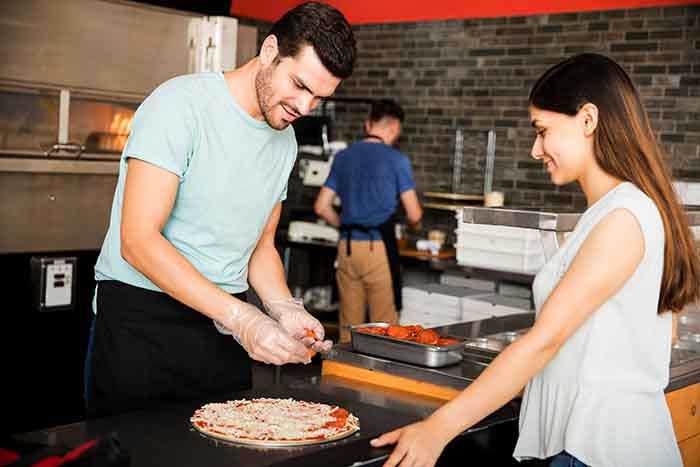

- Pizza prep tables: Refrigerated prep tables come in various styles, but pizza prep tables have extra-deep cutting boards to accommodate pizzas. The raised refrigerated pan rail keeps the sauce, cheese, and other toppings within reach, while the refrigerated doors and drawers below the worktop allow extra ingredients to be at hand.
Share

